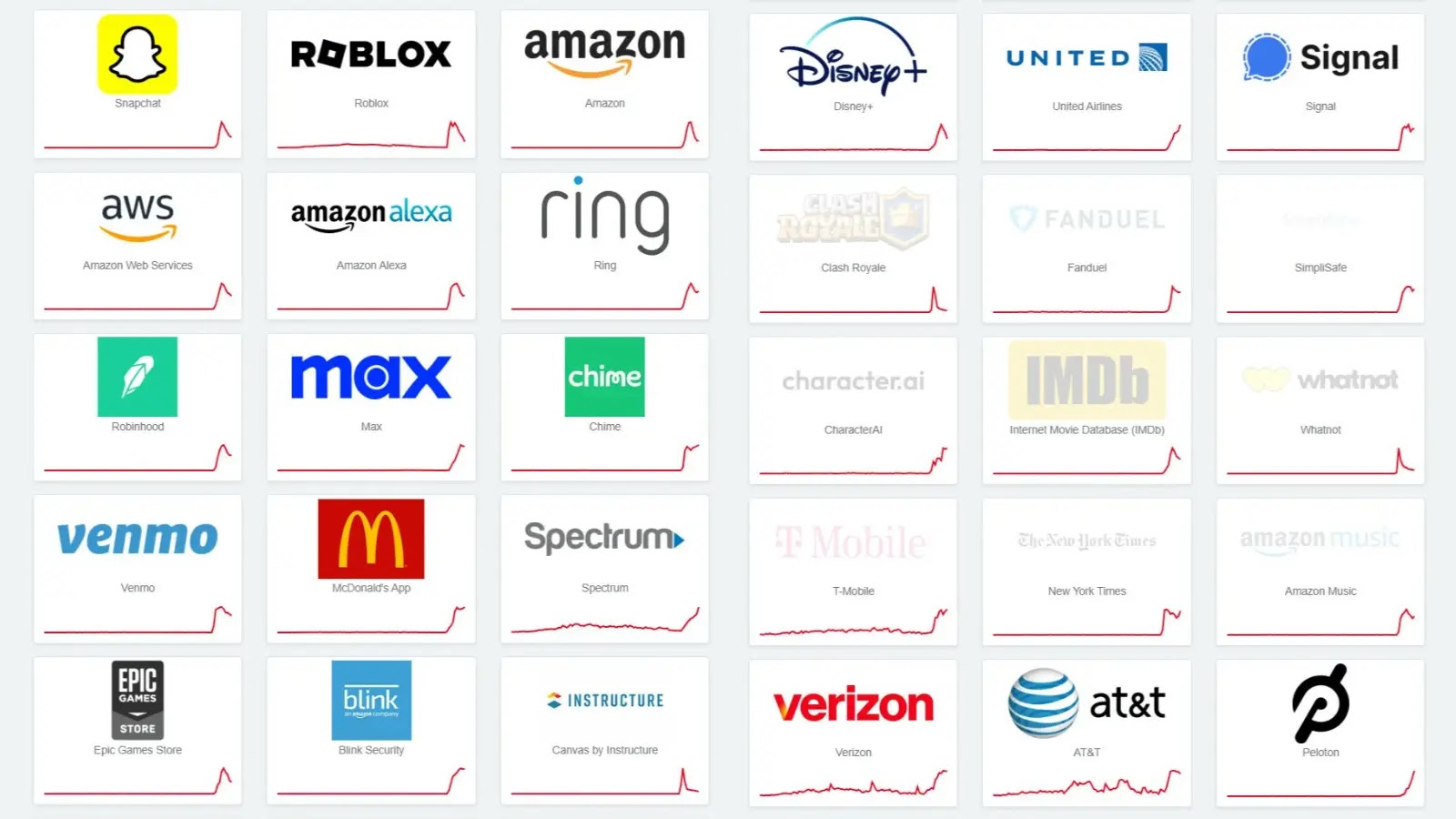
AWS Outage Impacts Amazon, Snapchat, Prime Video, Canva and More – Update
Unpacking the Ripple Effect: The AWS Outage that Shook the Digital World
The digital landscape we navigate daily relies heavily on a complex, interconnected web of services. When a cornerstone of this infrastructure falters, the impact can be swift and far-reaching. Such was the case with a significant Amazon Web Services (AWS) outage that occurred recently, sending shockwaves across countless online platforms and disrupting operations for millions globally. This incident served as a potent reminder of the critical role cloud providers play and the vulnerabilities inherent in centralized systems.
The Day the Cloud Stumbled: Key Services Affected
On a Monday morning, what began as an isolated issue quickly escalated into a widespread disruption. The AWS outage impacted a considerable segment of the internet, demonstrating the extensive reliance on Amazon’s cloud infrastructure. From streaming entertainment to essential business applications, users experienced frustrating downtime. High-profile victims of the outage included:
- Amazon’s own massive e-commerce platform, affecting online shopping and logistics.
- Social media giant Snapchat, leaving users unable to connect.
- Streaming behemoth Prime Video, interrupting entertainment for subscribers.
- Creative design platform Canva, hindering productivity for designers worldwide.
- Numerous other businesses and applications that leverage AWS for their backend operations, from financial services to critical enterprise software.
The incident underscored how deeply integrated AWS is into the fabric of the modern internet. While the specific root cause was not detailed in the immediate aftermath, such outages often stem from issues within networking, power infrastructure, or critical AWS services like EC2 (Elastic Compute Cloud) or S3 (Simple Storage Service).
Understanding the Architecture at Risk: How Centralization Leads to Widespread Impact
Cloud computing offers undeniable benefits in terms of scalability, cost-efficiency, and flexibility. However, the centralization of vast computing resources in a few major providers like AWS introduces a single point of failure risk. When a disruption occurs within critical AWS regions or core services, the ripple effect can be catastrophic and widespread. Applications that are not designed with multi-region redundancy or failover mechanisms are particularly susceptible. The outage highlighted:
- The importance of architectural resilience, including redundancy across availability zones and regions.
- The necessity of robust monitoring and alerting systems, both within cloud environments and for client-side applications.
- The potential for significant financial losses and reputational damage for businesses heavily dependent on a single cloud vendor without adequate contingency plans.
Remediation Actions and Strategic Preparedness
While an individual organization cannot prevent a major cloud provider outage, proactive measures can significantly mitigate its impact. For IT professionals, security analysts, and developers, the AWS outage serves as a critical call to action for enhancing architectural resilience and operational continuity.
- Geographic Redundancy: Distribute critical application components and data across multiple AWS regions or even different cloud providers. This ensures that a localized outage does not bring down your entire service.
- Multi-AZ Deployment: Within a single AWS region, ensure services are deployed across multiple Availability Zones (AZs). AZs are engineered to be isolated from failures in other AZs.
- Robust Backup and Recovery Strategies: Implement comprehensive backup plans for all critical data and ensure swift recovery procedures are well-tested and documented.
- Failover Mechanisms: Design applications with automated failover capabilities to redirect traffic and workloads to healthy instances or regions during an outage.
- Dependency Mapping: Understand all your application’s dependencies on specific AWS services and regions. This helps in pinpointing potential single points of failure.
- Continuous Monitoring: Utilize AWS monitoring tools (e.g., CloudWatch) and third-party solutions to keep a close watch on service health and performance. Develop immediate alert systems for anomalies.
- Communication Plans: Establish clear communication protocols for informing users and stakeholders during an outage. Transparency builds trust.
- Regular Testing and Drills: Periodically test your disaster recovery and business continuity plans to identify weaknesses and refine processes.
The Path Forward: Building Resilient Digital Infrastructures
The recent AWS outage, impacting giants like Amazon, Snapchat, Prime Video, and Canva, vividly illustrates the interconnectedness of our digital world and the critical importance of foundational cloud services. While these events are rare, their impact can be sweeping. For organizations, the takeaway is clear: while cloud adoption offers immense benefits, relying solely on a single provider without robust contingency planning is a significant risk. Prioritizing architectural resilience, implementing diversified strategies, and continuously testing disaster recovery plans are no longer just best practices; they are essential for survival in an increasingly digital and interdependent landscape.





